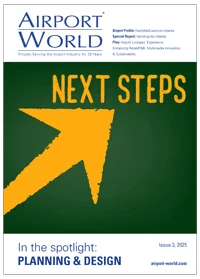Works of art
Share
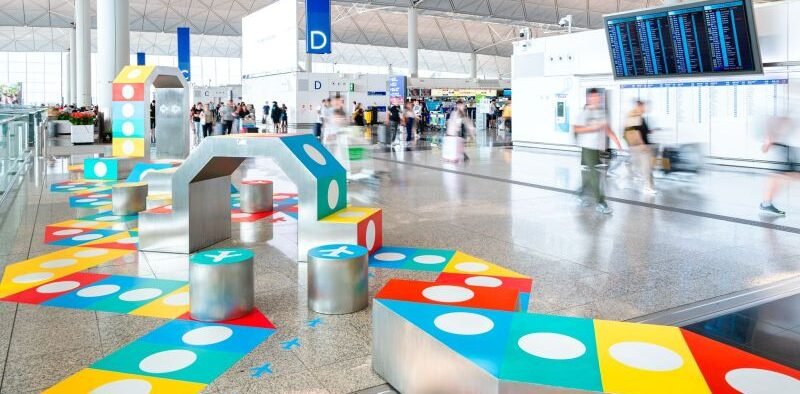
Airport artwork continues to innovate, win awards and surprise and delight travellers, and so much more is to come, writes Joe Bates.
AEROPLANE CHESS IN HONG KONG
An iconic Chinese board game, ‘Aeroplane Chess’ has come to life in Terminal 1 at Hong Kong International Airport courtesy of the transformation of a public seating area into an engaging new art installation.
For the uninitiated like me, Aeroplane Chess or Fei Xing Qi is a popular Chinese cross-and-circle board game similar to Ludo and Pachisi, where players race their aeroplane pieces around the board to reach the centre first.
Designed by local creative studio STICKYLINE in collaboration with the Hong Kong Arts Centre, the immersive artwork at HKG has reinvented the seating area between check-in aisles D & E on Departures Level (L7) into a playful, oversized version of the popular board game.
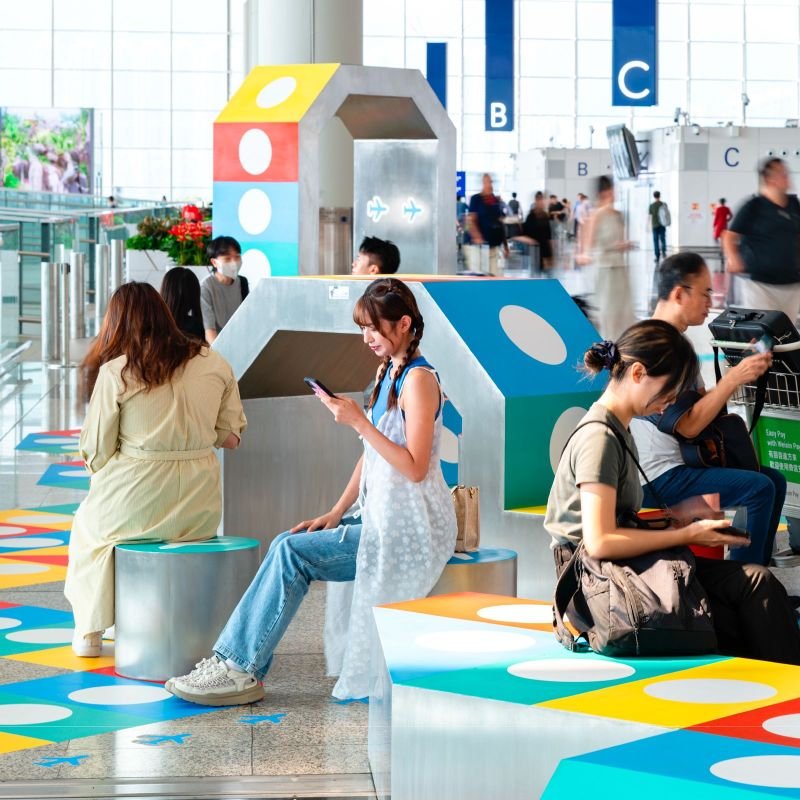
According to Airport Authority Hong Kong, the new addition features the game’s iconic colourful patterns and builds a vibrant, geometric 3D landscape that invites travellers to embark on a journey shaped by movement, connection and discovery.
It states: “Aeroplane Chess, an iconic board game in Hong Kong, is a cherished part of our childhood memories and shapes our earliest impressions of flight.
“The airport serves as a hub for countless travellers embarking on their journeys – some are ready to depart, while others are returning home. “Here, their paths may intersect or diverge, creating a vibrant and dynamic scene.”
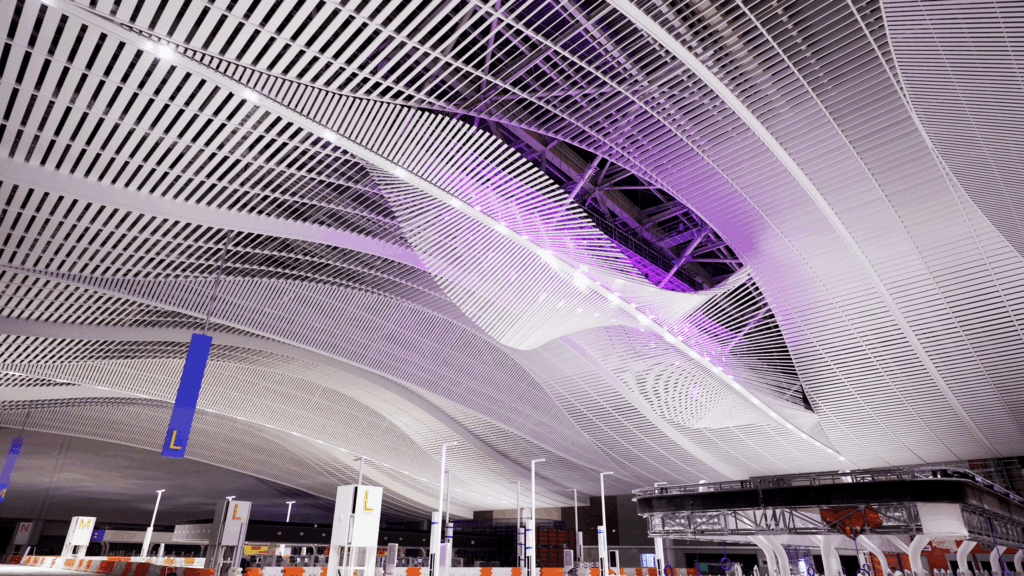
GLOBAL DESIGN AWARD FOR INCHEON’S KINETIC ARTWORK
The impressive kinetic art installation in the newly expanded Terminal 2 at Incheon International Airport is beginning to get noticed and win awards!
Indeed, it has won three major awards to date from Red Dot and iF Design (both German based) and another from IDEA in the United States.
Called ‘The Eternal Sky’, the kinetic artwork was created using advanced digital technology, with its movements said to be designed to represent the movements of endangered animals.
Powered by artificial intelligence and deep learning, the installation integrates real-time data on elements like the sun, clouds, and weather into its visual performance.
Its ceiling-mounted structure moves using advanced robotics, merging art and technology into an immersive digital experience that has captivated audiences and critics alike.

THE ART OF NOISE AT LONDON’S HEATHROW AIRPORT
Grammy-nominated Jordan Rakei has launched what is believed to be the world’s first track created entirely with sounds of an airport.
Rakei was given unprecedented access to the airport to create the seminal new summer soundtrack that features rhythms ranging from the beats of baggage belts to the hum of escalators.
The track is designed to give passengers a mood-matching mix to kick start their journeys and has been played on a loop throughout the terminals this summer.
The UK hub says the initiative is an ode to Brian Eno’s iconic Music for Airports, credited with launching the ambient music genre.
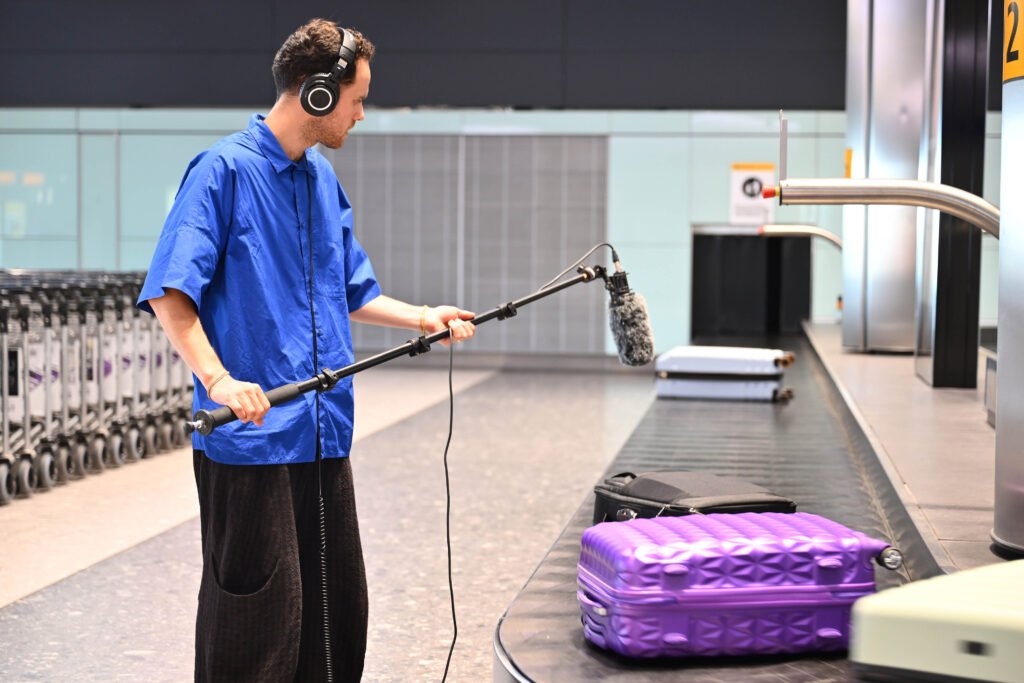
Also included are sounds from famous movie scenes, such as the tapping of passengers’ feet as they wait at a gate in Terminal 2 (featured in Bend It Like Beckham), the beeps of Terminal 3’s security scanner that Sam runs through to catch Joanna in Love Actually, and the engines whirling on the tarmac where Die Another Day was filmed.
Rakei enthuses: “Having travelled all over the world for my music and spent a huge amount of time in airports, I’ve always loved that buzz that comes with the excitement and anticipation of travel. So, getting the chance to turn Heathrow’s many sounds into music was an honour.”
NEW SETTING AT PIT FOR CLASSIC ARTWORK
Alexander Calder’s iconic kinetic mobile is being relocated to the landside atrium of Pittsburgh International Airport’s new terminal where it will be displayed as the centrepiece of its art collection, offering a warm and inspiring welcome to every traveller.
First installed at PIT in 1959, the 600lb mobile has been almost ever present at the gateway for 70 years with the notable exception of a short stint at Carnegie Museum of Art and the last two years it has spent in storage in preparation for its move to the new terminal.
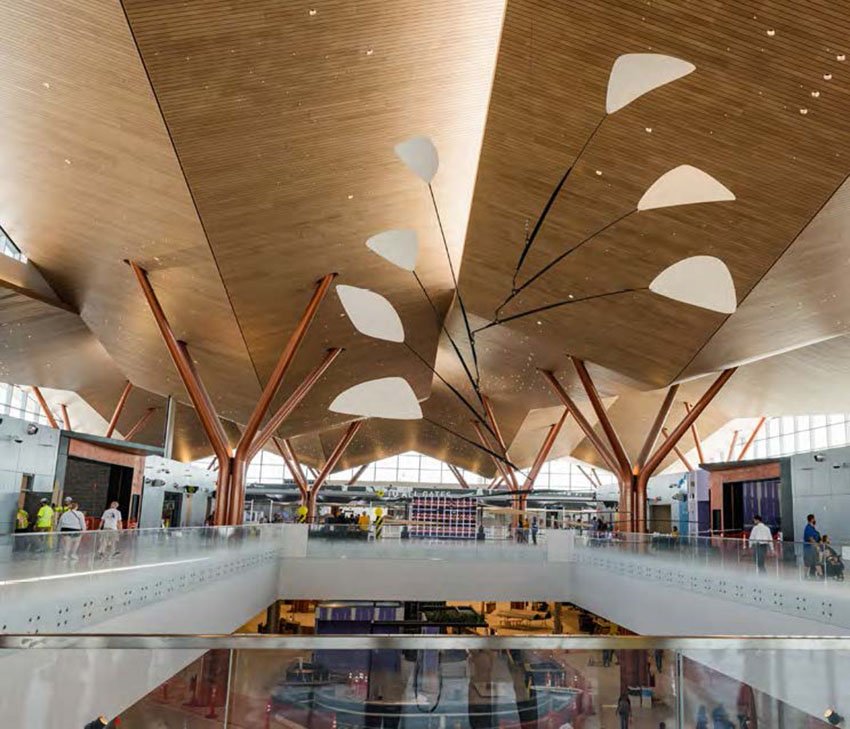
“People just expect to see the Calder at the airport,” says Keny Marshall, PIT’s manager of arts and culture.
And while the new landside terminal was not designed around the sculpture, its “place of prominence” was determined in collaboration with the architects – luis vidal + architects in association with Gensler + HDR – to highlight the piece and to give the public a better view of it, notes Marshall.
Called ‘Pittsburgh’, the mobile is made of black steel rods and white aluminium paddles and is balanced so that the elements move with just the slightest breeze to allow the activation of the mobile.
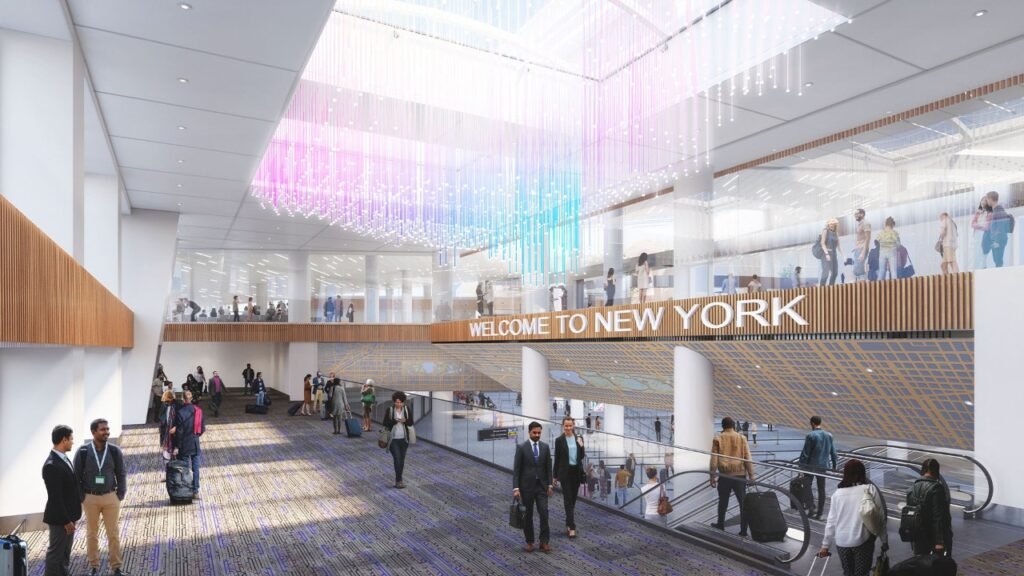
BIG PLANS FOR JFK’S NEW TERMINAL 6
The new Terminal 6 at John F Kennedy International Airport (JFK) will boast an International Arrivals corridor that feels like a New York arts district within the airport, according to its developers.
The Port Authority of New York and New Jersey (PANYNJ) and JFK Millennium Partners (JMP), the company selected to build and operate the highly anticipated $4.2 billion Terminal 6, have announced a landmark collaboration with four premier New York City cultural institutions – the American Museum of Natural History, Lincoln Center for the Performing Arts, the Metropolitan Museum of Art, and the Museum of Modern Art – to make the dream a reality.
PANYNJ’s executive director, Rick Cotton, said: “For a region that is renowned for its museums and performing arts centres, it is more than fitting that visitors arriving at Terminal 6 will be greeted by vibrant displays from four of our most popular cultural institutions.”

